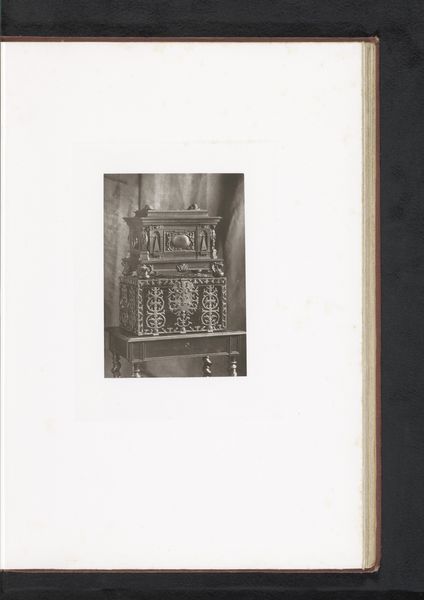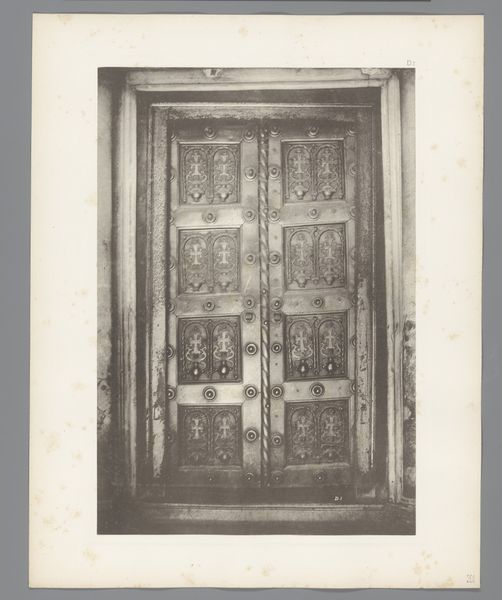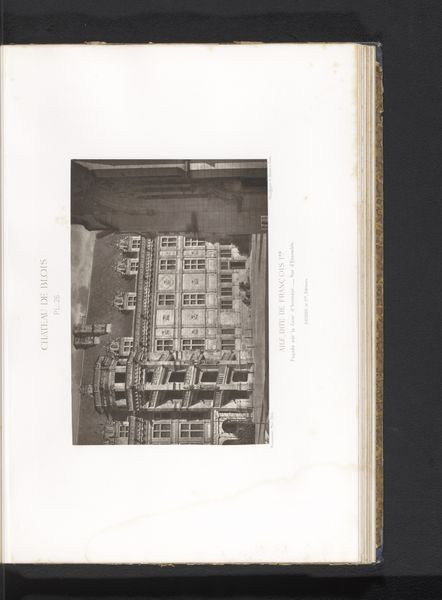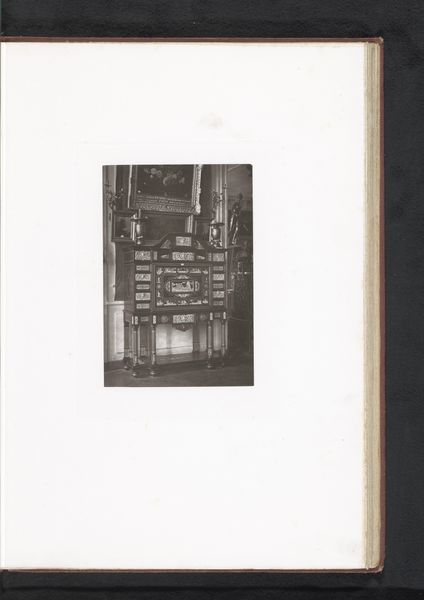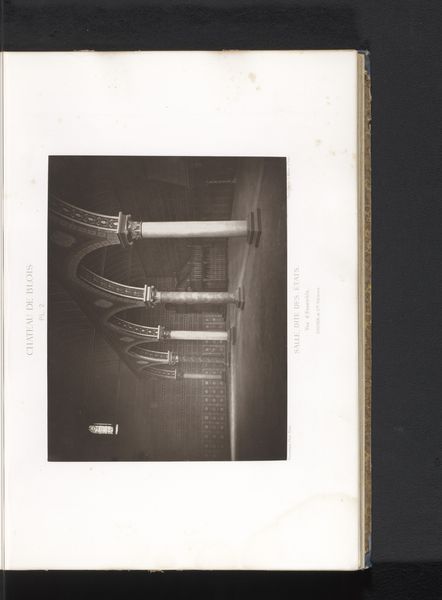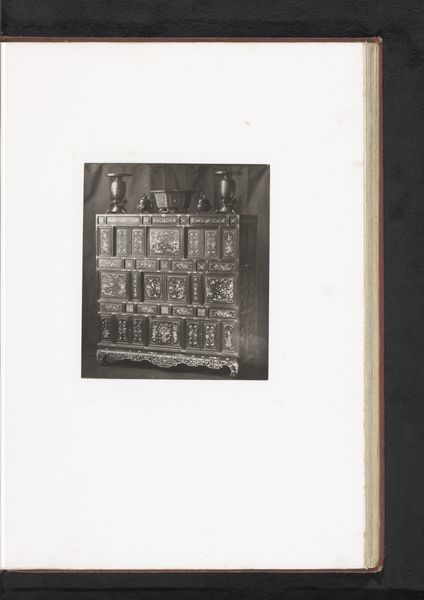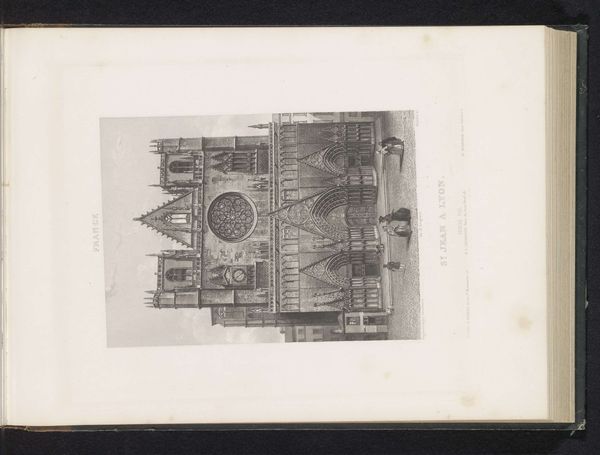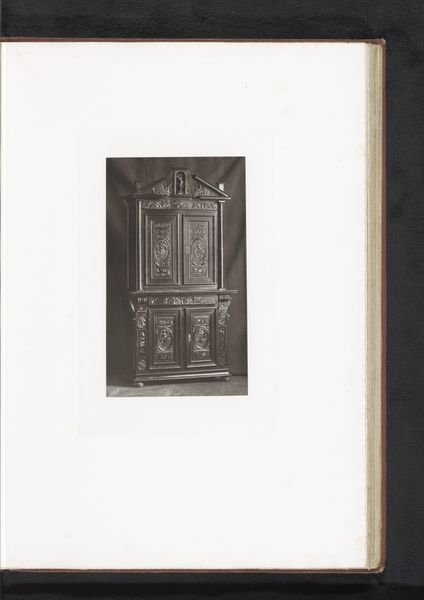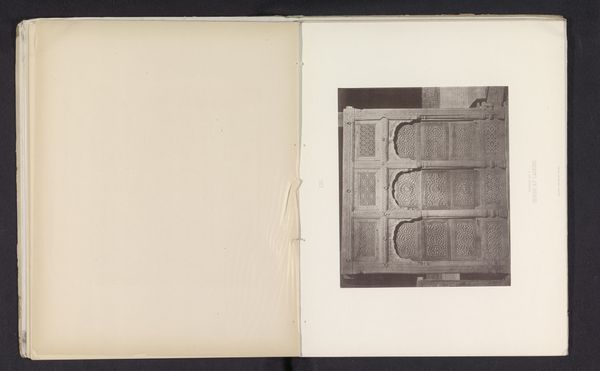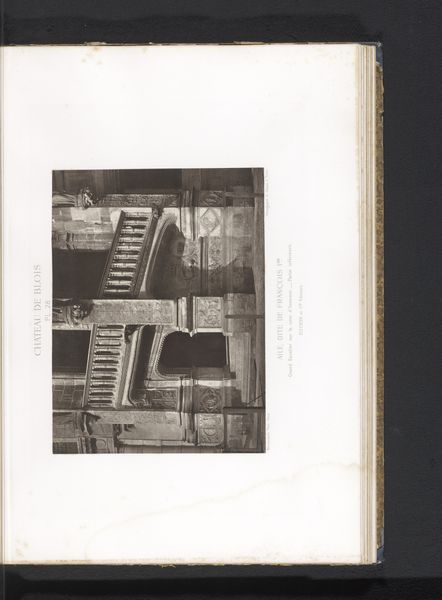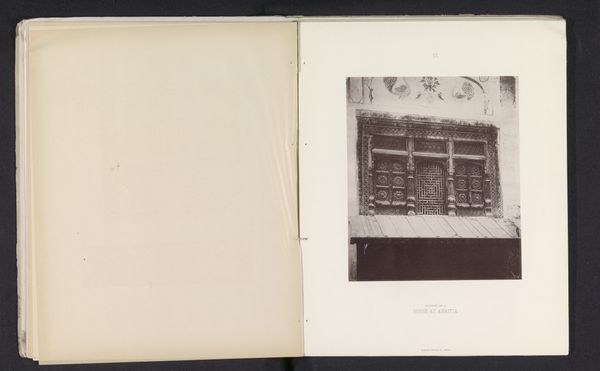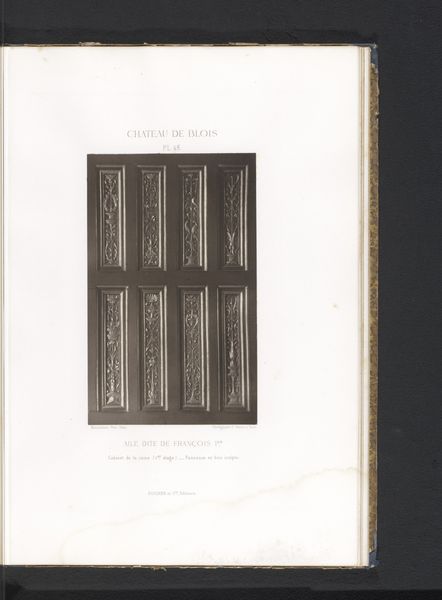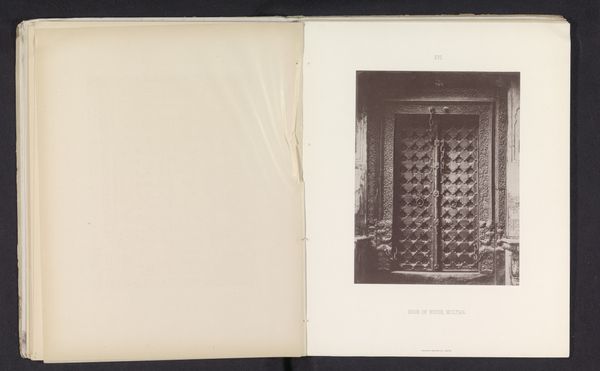
Gezicht op twee kleine deuren in de Frans I vleugel van het Kasteel van Blois before 1875
0:00
0:00
medericmieusement
Rijksmuseum
print, photography, architecture
# print
#
photography
#
academic-art
#
architecture
Dimensions: height 184 mm, width 238 mm
Copyright: Rijks Museum: Open Domain
Editor: Here we have a photograph titled "View of Two Small Doors in the Francis I Wing of the Chateau de Blois," attributed to Médéric Mieusement, taken before 1875. What strikes me most is the formal rigidity – like an architectural record more than an artistic interpretation. What's your take? Curator: Indeed. It’s fascinating how early photography often adopted the visual language of academic painting. This image speaks to the 19th-century obsession with documenting and preserving historical architecture, a reflection of growing nationalistic sentiment. Notice how the composition is symmetrical, almost reverential. Consider how the rise of photography allowed for wider access to historical monuments, previously only available to the elite through travel or engravings. In what ways do you think this accessibility changed the public's perception of their nation's history? Editor: That's a really insightful question! It makes me think about how images like this, disseminated widely, could shape a shared national identity and pride in architectural heritage. Do you think that also presented a certain controlled narrative, favoring specific eras and styles? Curator: Precisely. The choice to photograph these doors, from the French Renaissance period, over, say, medieval remnants, subtly reinforces a particular vision of French history—one emphasizing royal power and artistic achievement. The photograph then isn't merely a record; it is a carefully constructed political statement about national identity through selective visual documentation. What lessons can we draw today, given how digital photography now influences social dynamics? Editor: This has completely transformed my view. I initially saw it as a straightforward depiction of architecture, but it’s much more – a reflection of how photography can shape historical narratives. Curator: Exactly. Reflecting upon art using the lens of social and cultural history illuminates its public role and the inherent politics within images. It changes our approach from simple aesthetic enjoyment to thoughtful observation.
Comments
No comments
Be the first to comment and join the conversation on the ultimate creative platform.
